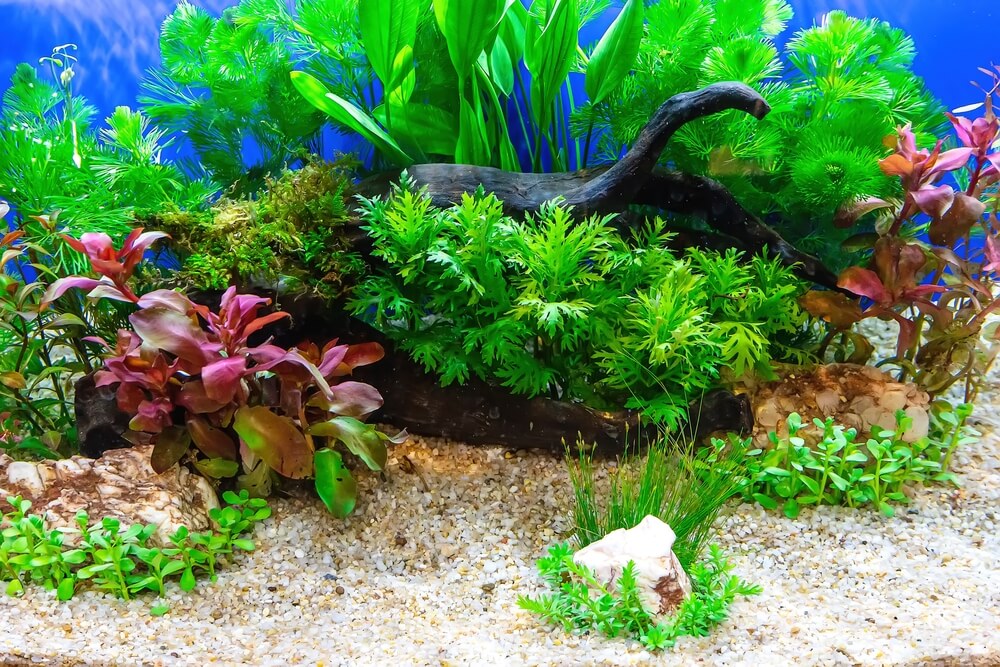Dive into the enchanting world of aquatic plants and explore their captivating beauty.
The Importance of Aquatic Plants in Ecosystems

Aquatic plants play a crucial role in maintaining the balance of ecosystems. They provide oxygen through photosynthesis, which is essential for the survival of aquatic organisms such as fish and other aquatic creatures. Additionally, aquatic plants act as natural filters, absorbing excess nutrients and pollutants from the water, improving water quality and clarity. These plants also provide shelter and food for various aquatic species, contributing to the overall biodiversity of aquatic ecosystems.
Another important aspect of aquatic plants is their contribution to the oxygen-carbon dioxide cycle. Through photosynthesis, they absorb carbon dioxide and release oxygen, helping to regulate the levels of these gases in the water. This is especially important in bodies of water with high levels of organic matter, where decomposition can deplete oxygen levels and harm aquatic life. Aquatic plants help to maintain a healthy balance by replenishing oxygen levels and reducing carbon dioxide.
In addition to their ecological importance, aquatic plants also serve as indicators of water quality. Certain species of aquatic plants are sensitive to environmental changes and pollution. Their presence or absence can provide valuable information about the condition of a water body. Monitoring the health and diversity of aquatic plant communities can therefore help in assessing the overall health of aquatic ecosystems and identifying potential issues.
Overall, aquatic plants play a vital role in maintaining the health and stability of aquatic ecosystems. Their presence not only enhances the beauty of these environments but also supports the survival of a wide range of aquatic organisms.
Types of Aquatic Plants and Their Characteristics
Aquatic plants come in a variety of types, each with its own unique characteristics and adaptations to the aquatic environment. Some common types of aquatic plants include floating plants, submerged plants, and emergent plants.
Floating plants, as the name suggests, float on the surface of the water. They have special adaptations such as air-filled chambers or swollen leaves that allow them to stay afloat. Examples of floating plants include water lilies, duckweed, and water hyacinths.
Submerged plants are rooted in the bottom of the water body but have most of their vegetative parts submerged underwater. They have long, flexible stems and finely divided leaves that allow them to extract nutrients from the water. Examples of submerged plants include eelgrass, waterweed, and hornwort.
Emergent plants are rooted in the bottom of the water body but have their stems and leaves extending above the water surface. They are often found in the shallow edges of lakes, ponds, and wetlands. Examples of emergent plants include cattails, bulrushes, and water irises.
Each type of aquatic plant has its own role and contributes to the overall ecosystem. Whether providing shade and shelter, oxygenating the water, or serving as a food source, these plants are essential for the health and balance of aquatic environments.
Benefits of Having Aquatic Plants in Your Aquarium
Having aquatic plants in your aquarium not only adds beauty but also provides numerous benefits to the overall health and well-being of the aquatic ecosystem.
One of the main benefits is that aquatic plants help to maintain water quality. They absorb excess nutrients, such as nitrates and phosphates, that can lead to algae blooms and poor water conditions. By effectively competing for these nutrients, aquatic plants help to prevent algae overgrowth and maintain a healthy balance in the aquarium.
Aquatic plants also provide natural hiding places and shelter for fish and other inhabitants of the aquarium. They create a more natural and stimulating environment, reducing stress and promoting the overall well-being of the aquatic organisms. Additionally, some fish species like to nibble on the leaves of aquatic plants, which can mimic their natural feeding behaviors and provide them with essential nutrients.
Another benefit of having aquatic plants is their ability to release oxygen during photosynthesis. This helps to oxygenate the water and improve the overall oxygen levels, creating a healthier environment for the aquatic organisms. In turn, the fish and other inhabitants of the aquarium will be more active and vibrant.
Lastly, aquatic plants add visual appeal to the aquarium. They come in various shapes, sizes, and colors, allowing you to create a stunning underwater landscape. Whether you prefer lush green plants or vibrant flowering species, there are countless options to choose from to suit your aesthetic preferences.
In conclusion, having aquatic plants in your aquarium not only enhances its beauty but also provides numerous benefits to the overall health and well-being of the aquatic ecosystem. From maintaining water quality to providing natural shelter and oxygenation, these plants play a vital role in creating a thriving and visually appealing aquarium.
How to Care for Aquatic Plants
Proper care is essential for the health and longevity of aquatic plants in your aquarium. Here are some tips to help you keep your aquatic plants thriving:
1. Lighting: Aquatic plants require a sufficient amount of light for photosynthesis. Ensure that your aquarium has appropriate lighting, either through natural sunlight or artificial aquarium lights. Different plants have different light requirements, so it's important to research the specific needs of the plants you have.
2. Substrate: Use a suitable substrate for planting aquatic plants. This can be gravel, sand, or specialized aquatic plant substrates. The substrate should provide a stable base for the plants and allow for proper root growth.
3. Nutrients: Aquatic plants require essential nutrients for growth. You can provide these nutrients through fertilizers specifically designed for aquarium plants. Be careful not to overdose on fertilizers, as it can lead to algae problems.
4. CO2 Injection: Some aquatic plants benefit from carbon dioxide supplementation. You can use CO2 injection systems to provide the necessary carbon dioxide for these plants. However, not all plants require CO2 supplementation, so research the requirements of your specific plants.
5. Water Parameters: Maintain appropriate water parameters for the plants in your aquarium. This includes temperature, pH level, and water hardness. Different plants have different preferences, so it's important to research the specific requirements of the plants you have.
6. Pruning and Maintenance: Regularly trim and prune your aquatic plants to remove dead or decaying parts. This helps to maintain the overall health and appearance of the plants. Additionally, remove any algae that may be growing on the plants or in the aquarium.
By following these care tips, you can create an optimal environment for your aquatic plants and ensure their long-term health and beauty.
Creating a Stunning Aquatic Plant Display in Your Home
Creating a stunning aquatic plant display in your home can transform any space into a captivating underwater oasis. Here are some tips to help you create a visually appealing and thriving aquatic plant display:
1. Plan your Layout: Before setting up your aquarium, plan the layout of your aquatic plants. Consider their growth habits, size, and color to create a visually balanced and harmonious arrangement. Place taller plants at the back and shorter plants at the front to create depth and perspective.
2. Choose the Right Plants: Select aquatic plants that are suitable for your aquarium's size, lighting, and water parameters. Research the specific requirements of each plant to ensure they can thrive in your setup. Consider a mix of foreground, midground, and background plants to create a layered effect.
3. Add Hardscape Elements: Enhance the visual appeal of your aquatic plant display by adding hardscape elements such as rocks, driftwood, or decorative ornaments. These elements can provide additional texture and focal points in the aquarium.
4. Consider Fish Compatibility: When choosing fish for your aquarium, ensure they are compatible with the aquatic plants you have selected. Some fish species may nibble on or uproot the plants, which can be detrimental to their growth. Research the behavior and requirements of the fish species to create a harmonious and balanced ecosystem.
5. Maintain Proper Lighting: Adequate lighting is crucial for the growth and health of aquatic plants. Use appropriate aquarium lights that provide the necessary spectrum and intensity for your plants. Consider using a timer to ensure consistent lighting duration each day.
6. Regular Maintenance: Maintain regular maintenance routines to keep your aquatic plant display looking its best. This includes pruning, removing dead leaves, and cleaning the aquarium glass. Regular water changes and monitoring of water parameters are also essential for the overall health of the plants and aquatic ecosystem.
With careful planning, proper care, and attention to detail, you can create a stunning aquatic plant display that will be the centerpiece of your home. Enjoy the beauty and tranquility of your underwater oasis!



.jpg?width=352&name=Ludwigia%20Repens%20In%20Tank%20ss%20(1).jpg)

Leave a Comment